Courage and taking risks are key to our interview with Joana Mahafaly, a fashion artist based in Paris
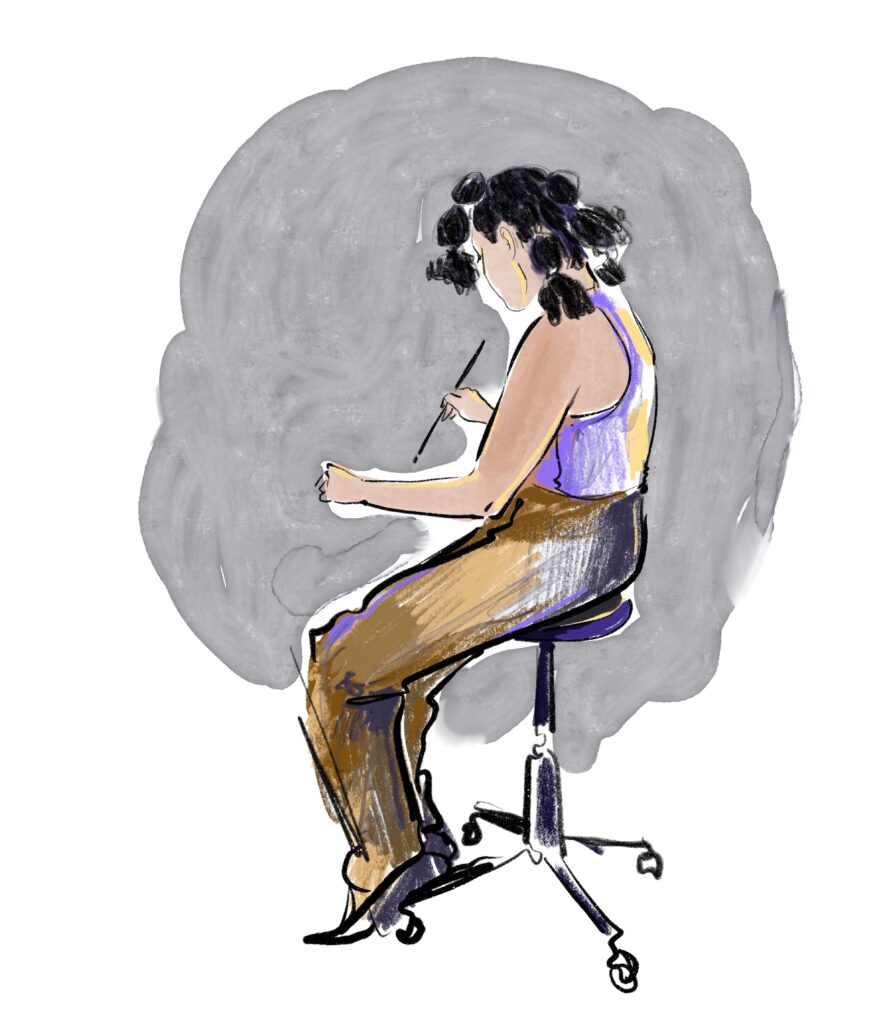
Joana Mahafaly
@joana_mahafaly _portrait
Joana est se décrit comme une « Fashion artiste » et nous lui avons rendu visite dans son studio de photos récemment ouvert en proche banlieue parisienne « Studio Initie » .
Elle nous raconte son périple artistique, voyage aux origines et à la recherches de techniques artisanales.
Du Japon en passant par Madagascar, de Paris à La Courneuve, une conversation avec Lively studio.
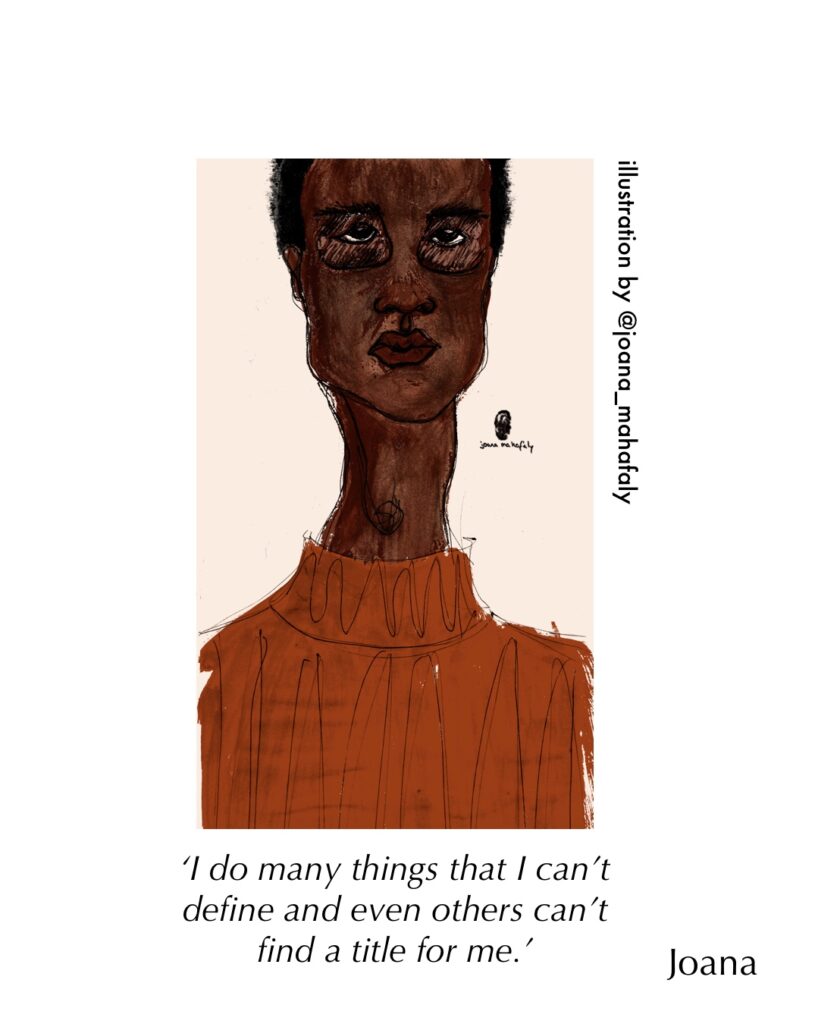
illustration by Joana Mahafaly
Joana in her photos studio ‘Studio Initie »
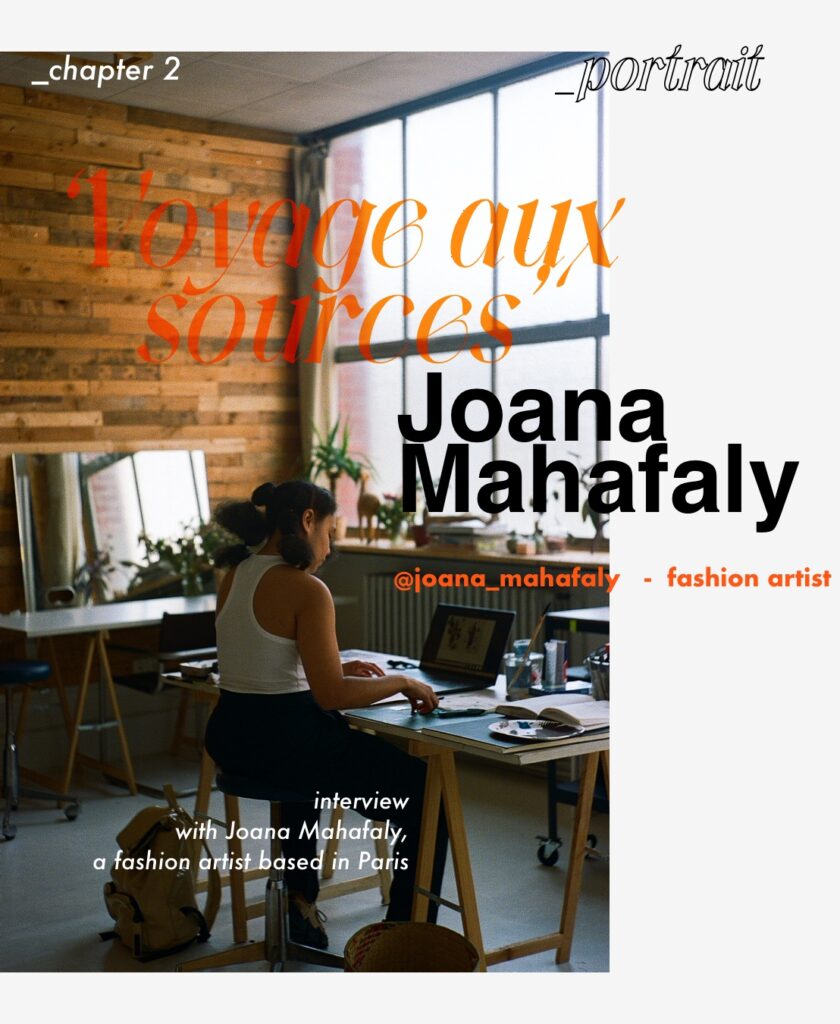
Lively Studio: Firstly, can you introduce yourself?
Joana Mahafaly: My name is Joana, I consider myself as a fashion artist which means working simultaneously as a stylist, art director and Illustrator.
LS: How did you become a fashion artist?
JM: Ah, it’s because in fact I can’t find one way to summarise my work, so I prefer to consider my self as a fashion artist. I do many things that I can’t define and even others can’t find a title for me. In a fashion shoot I’m a stylist and art director but I also craft my own props in the moment out of different materials to bring out a sculptural side to the models. I don’t like when the looks are too simple, I like that there is an added touch of something unusual. It’s this characteristic that I can’t manage to define.
LS: You are someone who is not afraid to ask for help or advice, even from people you don’t know!
JM: It’s funny that you notice that, because I’m always reaching out to people even if I’m scared, I’m not confident but I try anyway!
LS: You lived for some time in Japan, what qualities does this bring to your work?
JL: Like most people studying fashion we have a certain image in mind about Japanese ‘out of the ordinary style’ for example Comme des Garçons who is not making ordinary fashion it’s almost a costume, I had a desire to discover how they learn about fashion and how they see fashion compared to how we see in France. I wanted to also discover architecture and design, and to meet textile artisans.
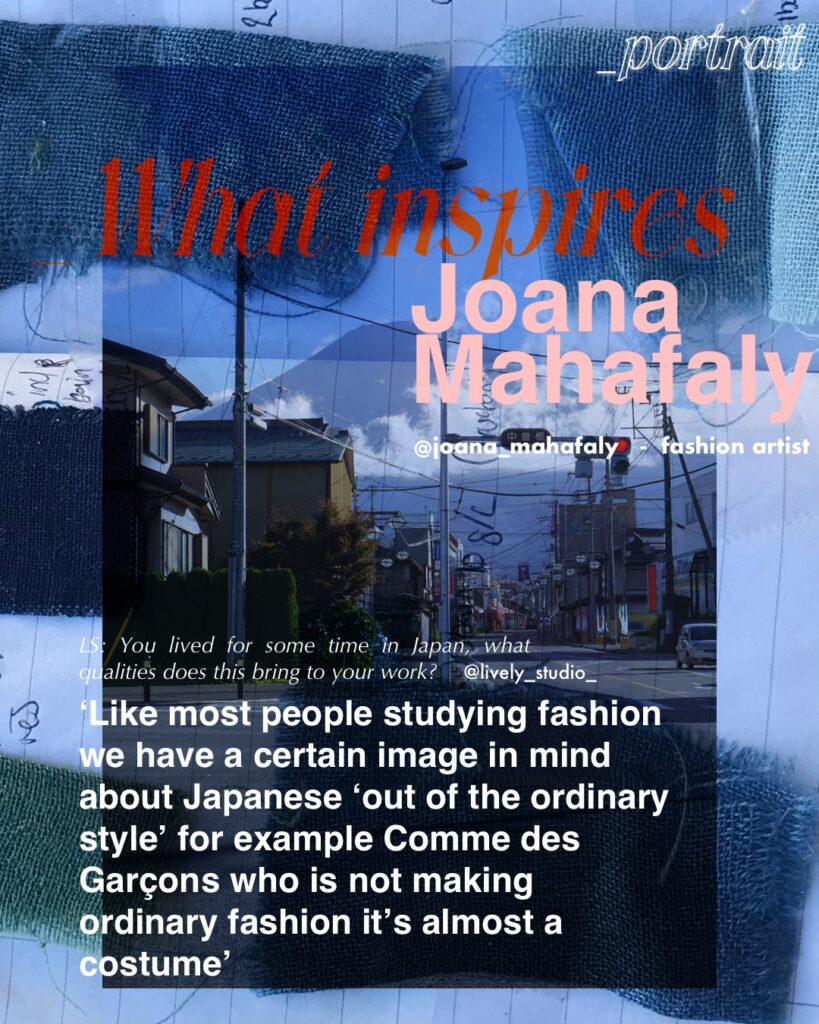
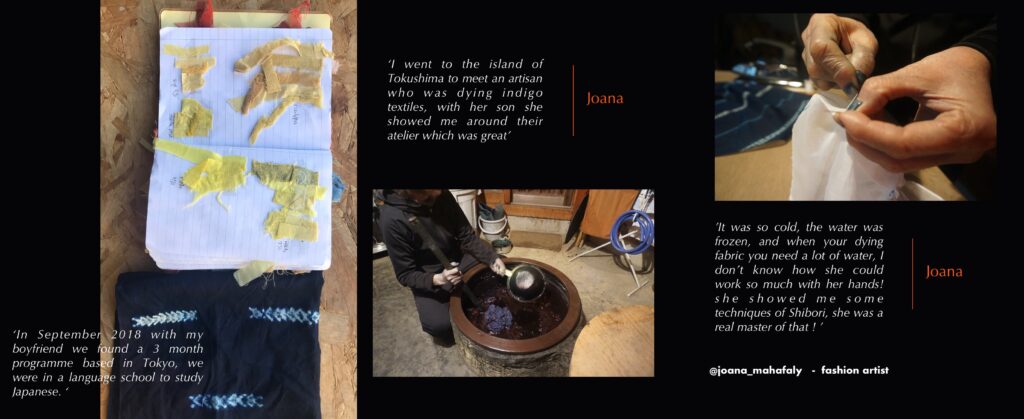
In September 2018 with my boyfriend we found a 3 month programme based in Tokyo, we were in a language school to study Japanese. In Japan there is an extremely important place for nature, even when we go in the mountains its very spiritual, there were many other people who travelled for hiking, you can see also they came to pray. I found a new love for nature, since I came back I see flowers and cherry trees in spring, before I didn’t notice them at all, it became almost sacred for me.
Just before leaving for Japan I did an internship in Trend Union in Paris, it’s a company that Lidewij Edelkoort created, she had a keen interest in artisanal textiles from around the world. After I did an internship in a natural textile dying company called Colore Ton Monde, there I learned many techniques about how to dye fabric with plants and I knew that in Japan there is a specific artisan industry based around indigo, so I wanted to meet with one. Before I left for Japan I started to send some emails to a girl who was in charge of Trend Union Japan, she put me in contact with local artisans in the region of Fuji. I also managed to visit an artisan textile festival in Fuji where they sold fabric, scarves, umbrellas and all types of accessories, here I was lucky enough to talk directly with the makers.
Just before leaving Japan I went to the island of Tokushima to meet an artisan who was dying indigo textiles, with her son she showed me around their atelier which was great, it was so cold the water was frozen, and when your dying fabric you need a lot of water, I don’t know how she could work so much with her hands! she showed me some techniques of Shibori, she was a real master of that!
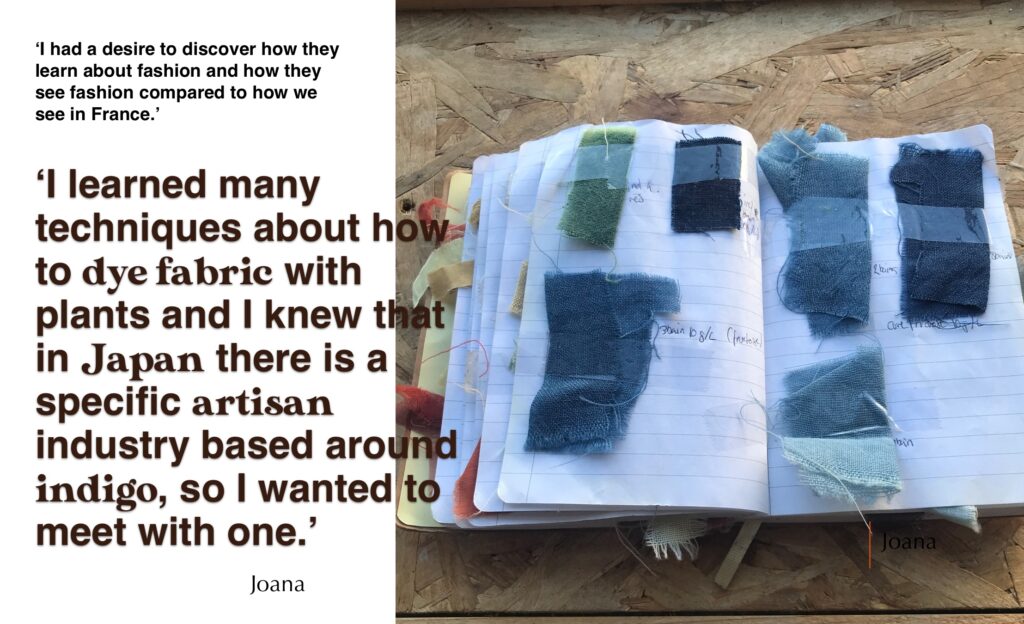
LS: Where did you study, and what brought you to all these different textile and artisanal choices?
JM: In 2012 I studied at a school in Belgium called Saint Luc, I was in the fashion section of an art school.
In France there are still artisans but it’s usually the older generations who conserve these skills, which is starting to get lost. However, I do see some companies who are beginning to work with natural dying and natural fibres like linen. There are some companies who are also starting to work in Africa with local craftsmen, that’s what I want to bring to my styling rather than using big brands, to integrate new creators who for me, are the future.
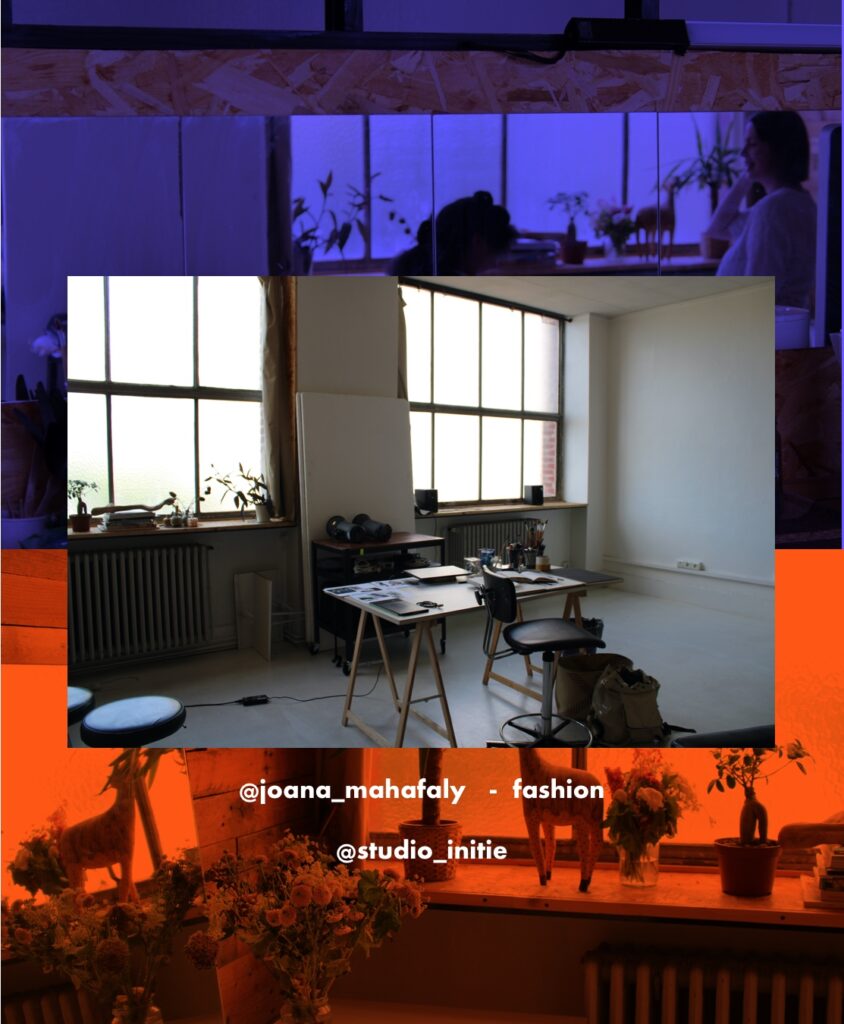
LS: You recently opened a photography studio, how did you learn all the necessary skills to achieve this?
JM: I asked some photographers I’m working with a lot about lighting and what materials you need for a photography studio. There is a lot of light where I’m working so I had to understand when the sunrises and sets to inform people in winter that they have to come a little bit earlier, I had to learn how to use a flash trigger too, fortunately I had friends who could help me and give advice.
LS: What inspires you for a photoshoot, or are there some recurring themes you like to work on?
JM: It’s a lot of themes around de-colonialism, I work enormously with Afro models, I have started to work with Asian models too. I try to make it an image of our word because in-fact we are a mixed culture, a melting-pot, I found that until recently we didn’t see enough Afro and Asian models. I try to bring a social aspect to my work, artisanal and spiritual. For example, you can see in the shoots some models have Afro’s in a geometric form, that was inspired by African hairdresser archives in the colonial period.
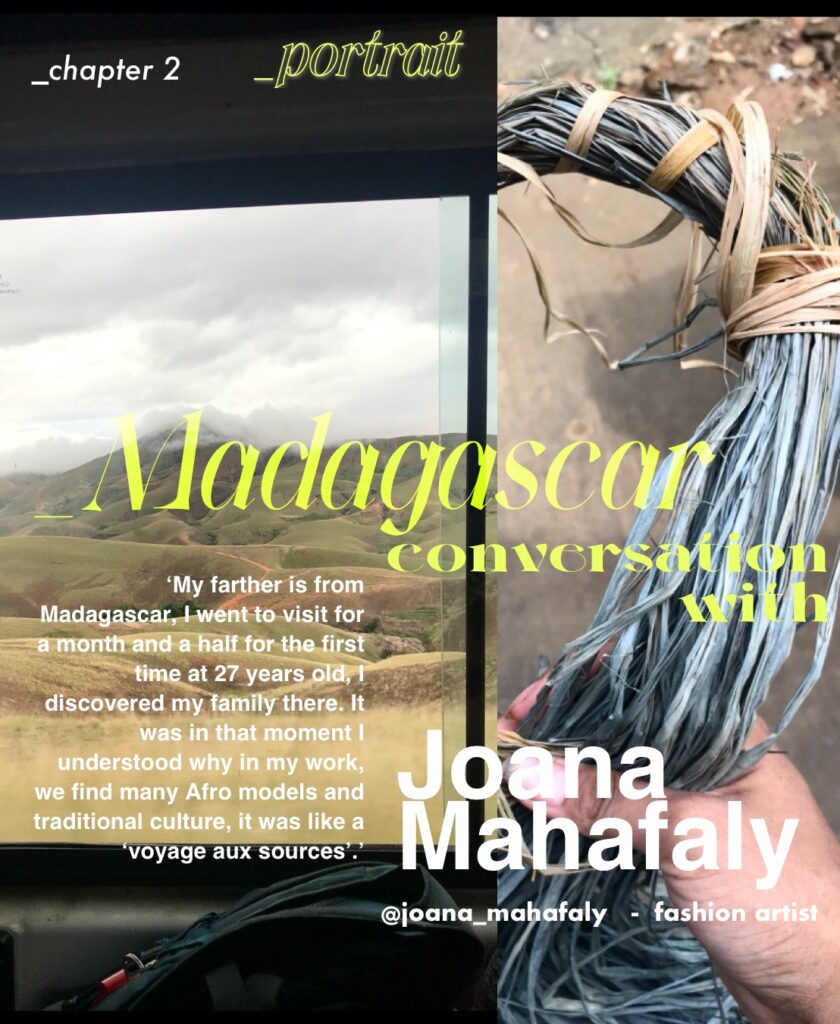
LS: What is your link to this culture?
JM: My farther is from Madagascar, I went to visit for a month and a half for the first time at 27 years old, I discovered my family there because I had no photos of them. It was in that moment I understood why in my work, we find many Afro models and traditional culture, it was like a ‘voyage au source’.
While I was there, I went to meet some artisans which however, was quite complicated. They are not hidden but difficult to find, or sometimes they don’t worry about quality. Some were not working with natural fibres only with new plastic which was quite a shame.
At the end of the trip I found someone in a small village in the forest in Mahajanga it was the rainy season so we had to go by foot and there were even some Lemurs. There we found a woman who was weaving bags, but I didn’t succeed to find any cotton manufactures for clothing.
LS:‘ – I think it’s something that has been lost in the last 40 years, my farther is from Madagascar too, my great-grandfather arrived from China to develop culture there. My farther told me it was very rich of ressources when he was young, there were lots of possibilities. At home I have many bags in natural fibres or leather work with embroideries made in Madagascar, however I think some of the craftsmanship has been lost. I know there are some companies who are currently trying to develop a savoir fare in Madagascar again.
JM: It’s subjects like this I try to bring in an artistic way to my work, but I would like to do more in this social aspect.
LS: So what’s your next project?
JM: It’s a project I worked on a lot with the photographer, he had an idea of an old couple walking in the street, he really liked the idea of the view from the back with their trench coats. I brought the idea of ‘vendeur a la sauvette’ street venders you can see in front of any Parisian landmark, we absolutely don’t see them in fashion and I find them so stylish and it’s funny to see them selling all their sunglasses, hats or mini Eiffel towers because in Africa you see this way to sell goods. I thought that was great to see the parallel and also I want to talk about them because we don’t speak of them enough.
So we sent this concept to different magazines and they can give us a ‘pull letter’ this helps you to borrow clothes from brands, if you have a good magazine it’s easier to do a styling. For the moment we have the magazine and the team so I just need to find the models for a shoot next week. It’s an enormous preparation, normally there is no budget for a photoshoot, as a stylist you live from advertising and e-commerce jobs.
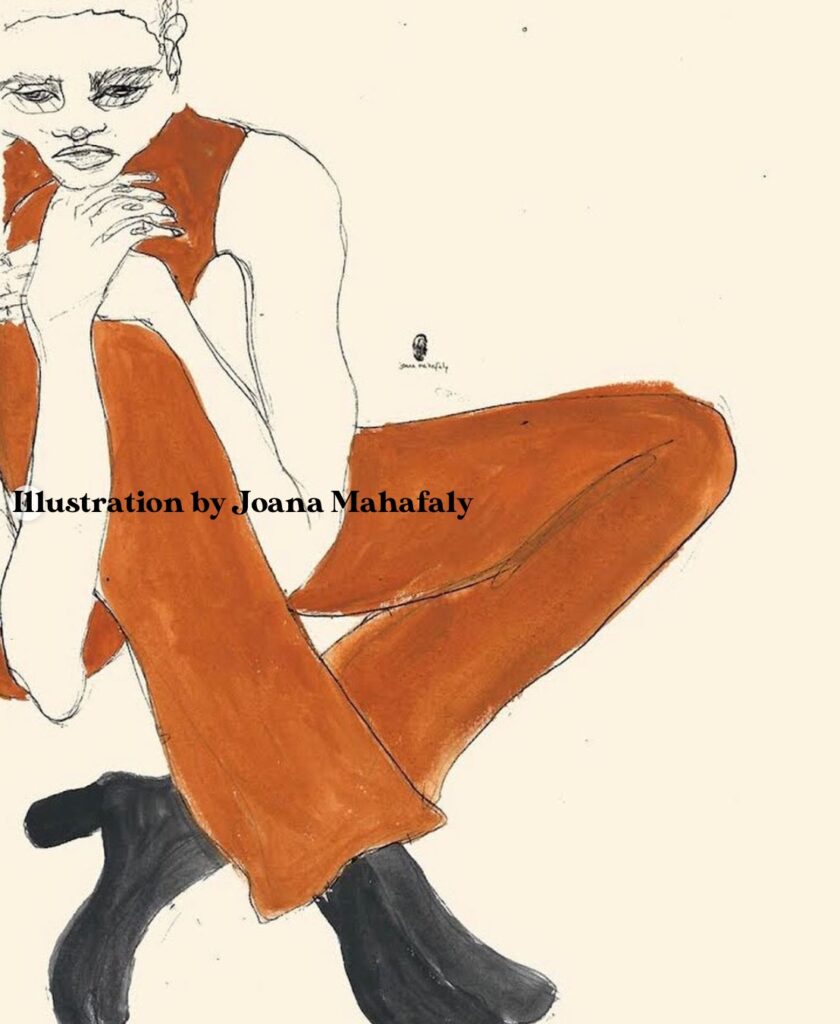
illustration by Joana Mahafaly
Styling by Joana Mahafaly
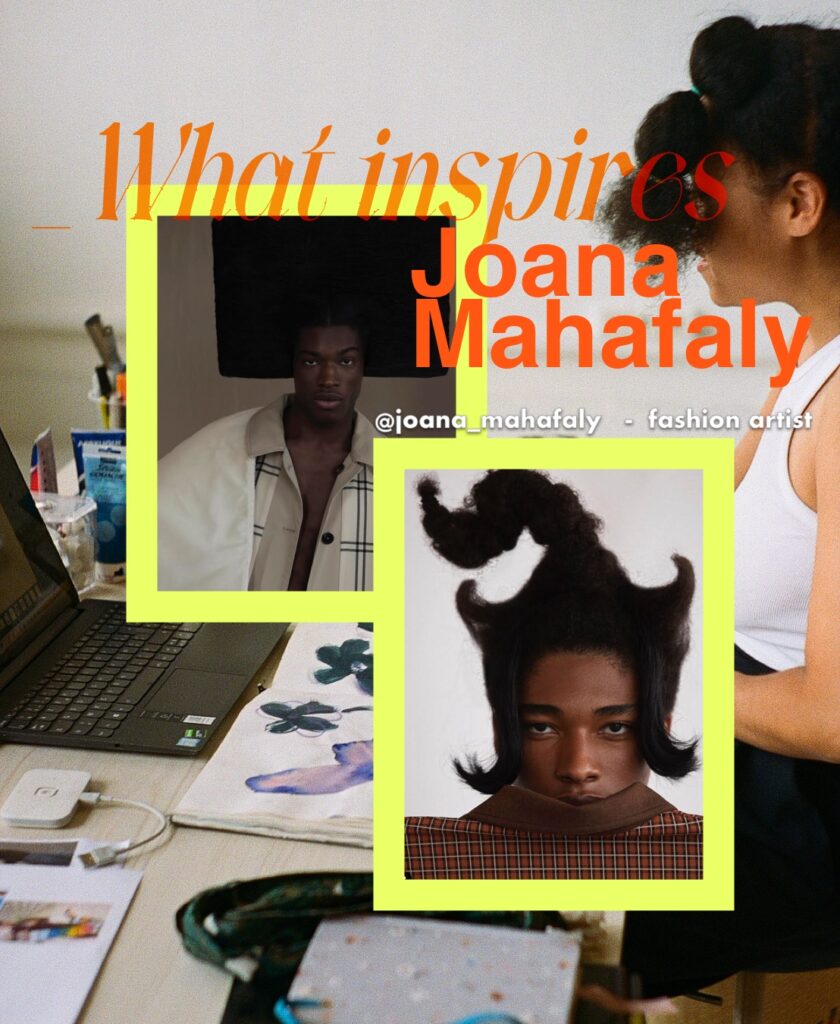
LS: You work next door to your boyfriend who is a music producer, how do you support of each other’s creative visions?
JM: He is just great, we really complete each other because I have many ideas but if someone doesn’t push me to do them, they will always stay just as ideas. He always thinks of how we can make them a reality.
It’s funny for this studio I had an idea to have a photography studio and when the opportunity presented itself, he remined me, but I felt I wasn’t ready! he gave me the push I needed. Even for Japan it was the same, I had an idea, and he was the one who found a date and somewhere to stay.
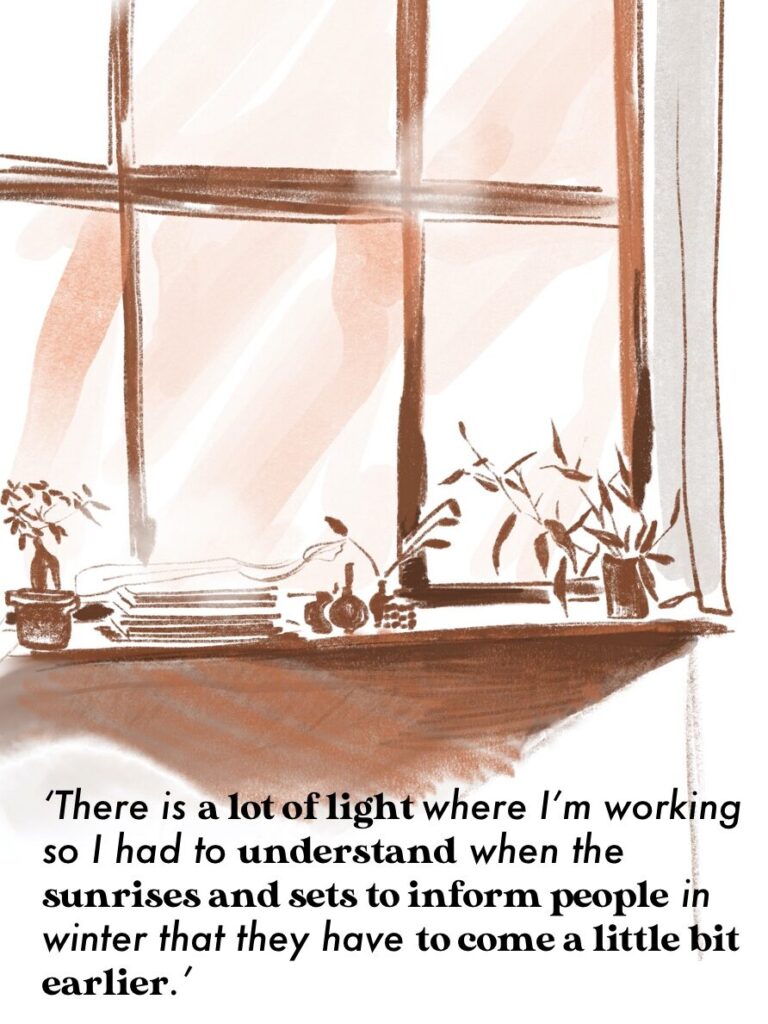
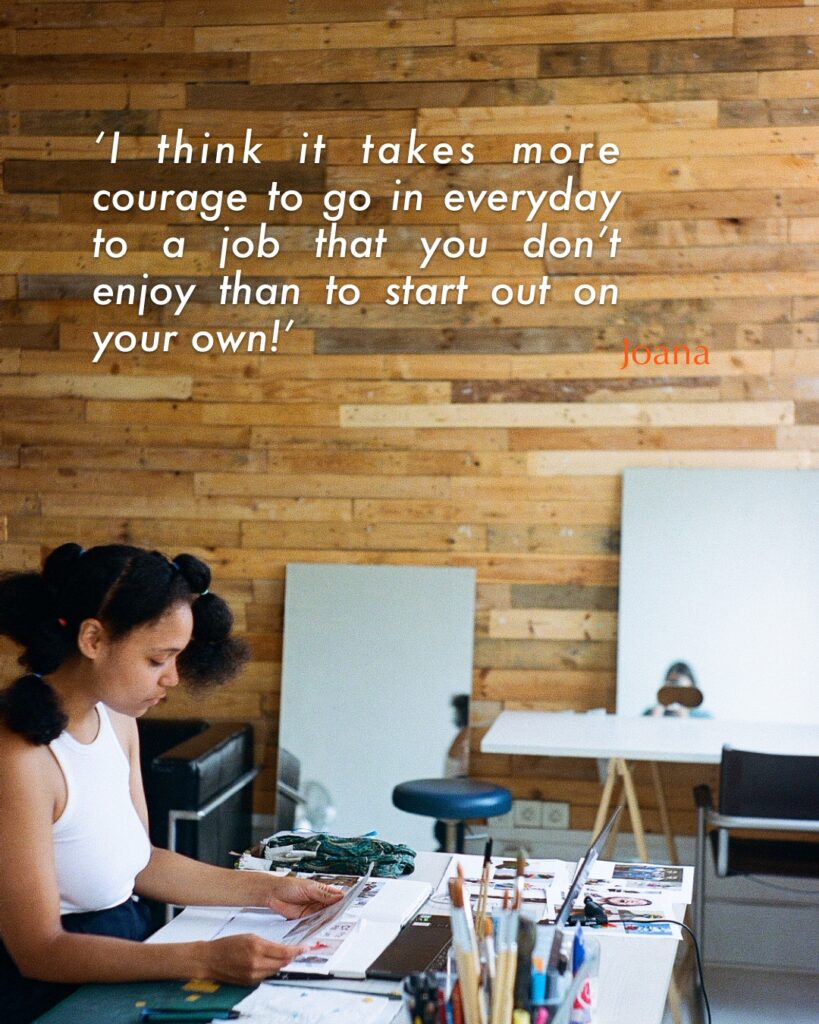
We always had a similar vision, he is a beat maker, producer and now has his own studio. It’s funny because in the beginning when we met each other in a summer job, I noticed he was singing a lot, like a human duke box. One day I asked him if he ever wanted to work in music? I told him to go ahead try, then he started to download music software and slowly but surely we began to work. Sometimes I reminisce of how we were in my student room in Lille, he was making music and sounds in my messy room full of fabrics and 6 years later were here, it’s cool!
When your fed up working in a job that doesn’t suit you, you start to tell yourself ‘I’m moving away from my own principles and values’ so to take a risk to quit everything and launch yourself in the career you really want is totally worth it! Everyone can do it! And deserves to! We think it’s safer to stay in a salaried position but in reality you will always find a way to manage, it just takes the patience of time and eagerness, nothing else. I think it takes more courage to go in everyday to a job that you don’t enjoy than to start out on your own!
Interview by Lively studio, read more interview in _portrait

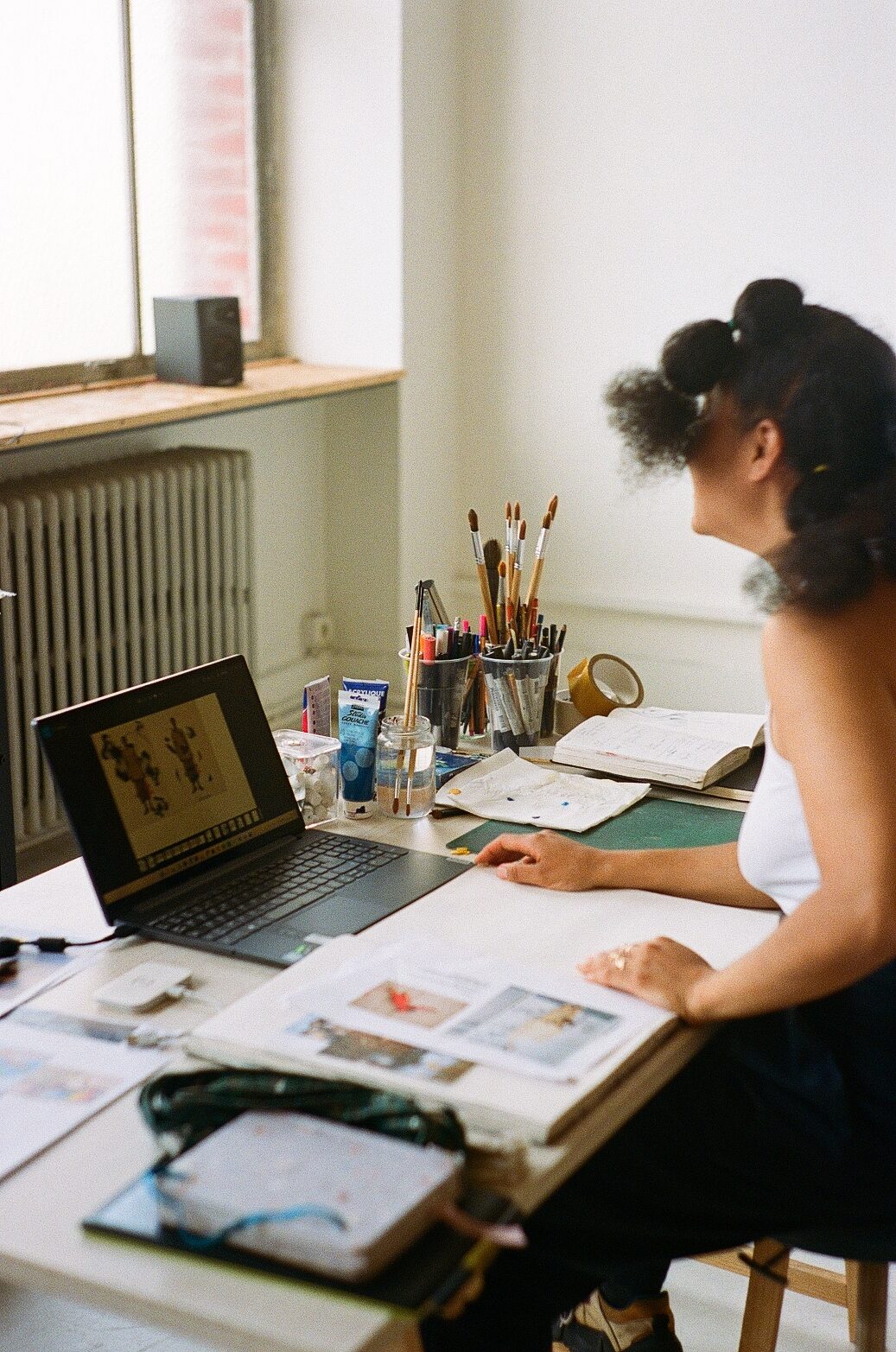
Hello,
« Reportage » très instructif
J’étais attiré par le Nom de famille qui a une consonance familière
Puis je découvre à la lecture de l’article les différentes facettes de Joana.